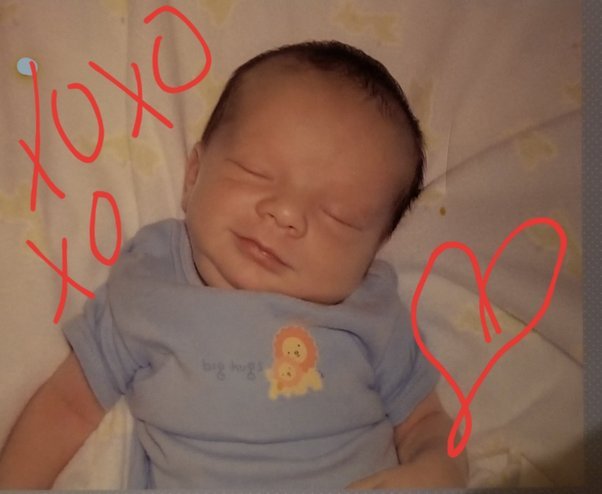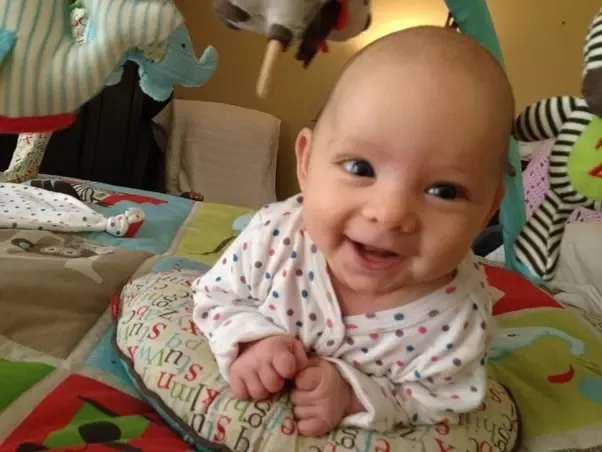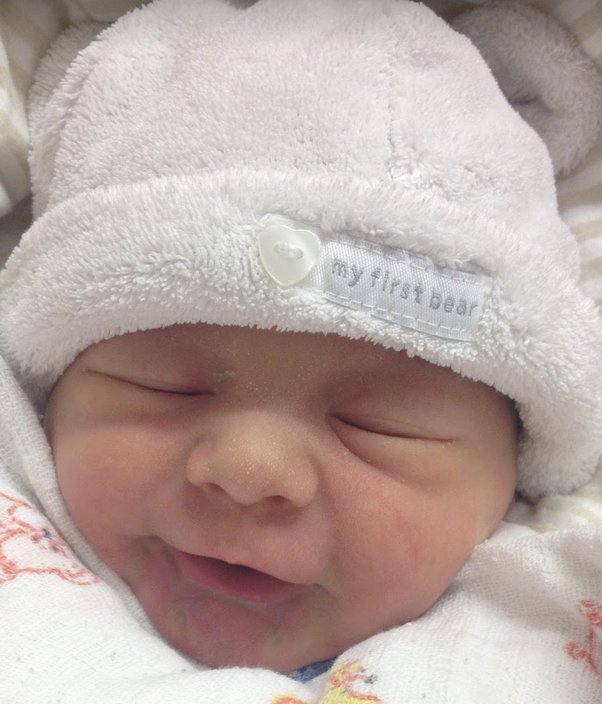Understanding That Magical Milestone (Without Obsessing Over Timelines)
You’re changing diapers, wiping spit-up, living in a swirl of newborn chaos, and all you want is a little feedback. A smile. That fleeting moment of connection that tells you: they know you’re here.
But when does that first real smile actually happen?
You’ve probably seen a dreamy smirk or a sleep-grin in the early days. But is that “the smile”? Not quite. That’s likely a reflex smile, and while it’s undeniably cute, it’s not the intentional, joyful grin that parents ache for.
The first true social smile, the one meant just for you, usually comes sometime between 6 and 12 weeks of age. But like everything in baby development, there’s a range, and a story behind the science.
Reflex Smiles vs. Real Smiles: What’s the Difference?
Not all smiles are created equal. In fact, the smiles you see in your baby’s first few weeks are likely reflexive, not social. Here’s the breakdown:
Reflex Smiles: The Newborn Quirk
These appear within the first few days, often when baby is drowsy, sleeping, or after feeding.
They’re not triggered by emotion or recognition, they’re a natural part of your baby’s neurological wiring, like sneezing or sucking.
You might catch one during a late-night diaper change or while they drift off in your arms. It’s adorable, but don’t be surprised if it disappears just as quickly.
Social Smiles: The Real Deal
Social smiles begin to emerge when your baby’s brain and sensory systems sync up enough to:
- Recognize a familiar face
- Focus visually (especially at 8–12 inches)
- React emotionally to your expression or voice
This isn’t just a milestone, it’s a developmental triumph, marking the shift from passive reflexes to intentional connection.
Parents often describe it as “a reward” that first moment when all the effort feels seen. And it usually happens right on the heels of another big leap: visual tracking and facial recognition.
How Can You Tell the Difference?
Here’s a quick comparison:
| Reflex Smile | Social Smile |
|---|---|
| Happens randomly, often during sleep | Happens during alert time |
| Not in response to people | Directly in response to faces, voices |
| No eye contact | Usually accompanied by eye contact |
| Disappears by 4–6 weeks | Begins around 6–12 weeks |
Think of the reflex smile as a warm-up act. The social smile is the headliner.
Timeline: When Do Babies Usually Smile?
If you’ve Googled “when do babies start smiling?”, you’ve probably seen a bunch of numbers tossed around: 4 weeks, 6 weeks, 8 weeks, 3 months…
So let’s break down the timeline with developmental nuance, not just numbers.
🗓 0–4 Weeks: Reflex Smiles
Newborns are still adjusting to life outside the womb. Their visual system is blurry, they can only see about 8–12 inches in front of them, and their primary job is to eat, sleep, cry, and survive.
Smiles in this phase are usually:
- Brief
- Random
- Not emotionally driven
They’re still meaningful, but not yet communicative.
🗓 4–6 Weeks: Transitions Begin
Some babies (especially full-term and neurologically mature ones) may start showing emerging social smiles, but don’t stress if you’re not seeing one yet.
Things to watch for:
- Better eye tracking
- A pause when you speak, as if they’re trying to process
- Smiles that happen more often during interaction, not sleep
🗓 6–8 Weeks: First True Social Smiles
This is the typical sweet spot.
Most babies begin flashing their first meaningful grins in this window, especially after they:
- Begin recognizing caregivers
- Spend more time in quiet alert states
- Start to coo or vocalize alongside smiling
This is when pediatricians will often ask, “Have you seen a social smile yet?”
🗓 8–12 Weeks: Consistency and Feedback Loops
By now, smiling becomes part of your baby’s communication toolkit. They might smile when:
- You enter the room
- You change your tone of voice
- You smile at them and hold it for a moment
Smiles become less random, more interactive, and often paired with early cooing, wiggling, or attempts at mimicry.
What About Premature Babies?
Babies born early often hit social milestones based on their adjusted age, not their birthdate.
So if your baby was born 4 weeks premature, their first smile might show up closer to 10–12 weeks post-birth, and that’s perfectly normal.
The Range Is Wide — And That’s Okay
Here’s a quick summary of when different babies might start smiling intentionally:
| Development Type | Typical Smile Window |
|---|---|
| Full-term | 6–8 weeks |
| Advanced / Early Developers | 4–6 weeks |
| Preemies | 8–12+ weeks adjusted |
| Neurodivergent or delayed | May be later or inconsistent |
Many pediatricians use a “watch and wait” approach until 12 weeks, as long as other signs of development (eye contact, alertness, sounds) are progressing.
Real Parent Voices: When Did Your Baby Smile?
Parents online share everything from excitement to anxiety around this milestone. On Reddit and Quora, some common reflections include:
- “My baby smiled at 5 weeks — but not again for days.”
- “One twin smiled at 6 weeks, the other not until 9. Both are fine.”
- “My baby smiled at the lamp before me — does that count?”
- “Our pediatrician said: ‘Just in time to save their lives.’”
These stories help normalize the emotional ups and downs of early development. That first smile doesn’t just reassure you that your baby is okay, it affirms you’re doing okay too.
Why Do Babies Smile?

That first real smile isn’t just a milestone, it’s a message.
When your baby smiles at you, they’re not just mimicking your face. They’re showing you that something’s clicking in their social and emotional development. They’re beginning to understand the power of human connection.
Here’s what’s really going on behind that tiny grin:
🧠 Mirror Neurons and Emotional Mimicry
From just a few weeks old, babies’ brains begin firing up mirror neurons, special brain cells that activate when they see someone smile, speak, or express emotion. It’s your baby’s hardwired empathy system, kicking in.
When you smile at your baby and pause, their mirror neurons help them practice copying your expression. Over time, this becomes emotional resonance, they aren’t just copying, they’re reacting.
👀 Recognition and Visual Processing
Your baby’s vision is still developing, but by around 6–8 weeks, they can lock onto faces more clearly — especially yours.
That familiar face becomes their favorite sight. And when they recognize you and feel calm or excited, that emotion may show up as a smile.
💬 Early Communication
Smiling is one of the first non-verbal tools your baby uses. It says:
- “I like this.”
- “I know you.”
- “I want to connect.”
It’s the start of social reciprocity, a back-and-forth interaction that sets the stage for language development, emotional bonding, and eventually, giggles, babbling, and conversation.
What If My Baby Isn’t Smiling Yet?
This is the part where worry sneaks in. You’ve seen other babies flash toothless grins. A friend’s baby smiled at five weeks. Your pediatrician asks casually, “Are you seeing social smiles yet?”
But your baby… hasn’t smiled. Or only does it in sleep. Or seems more focused on ceiling fans than your face.
Here’s what to know — and what to look for
⏳ First, Reassess the Timeline
Remember: most babies smile intentionally between 6 and 12 weeks, and variation is completely normal.
Ask yourself:
- Is your baby starting to make eye contact?
- Are they more alert during the day?
- Do they seem to respond to your voice or expression with stillness, cooing, or focused attention?
If so, smiling is probably right around the corner.
🧮 Adjust for Prematurity
If your baby was born early, use their adjusted age. the age they would be if born full-term — when tracking milestones.
A baby born 4 weeks premature who is 9 weeks old may just now be developmentally at 5 weeks, which means smiles may still be a couple weeks away.
⚠️ When to Check In
If your baby is approaching 12–14 weeks and:
- Shows little or no eye contact
- Doesn’t react to voices or faces
- Isn’t making expressive sounds (cooing, grunting)
- Seems overly floppy or stiff
…it’s a good idea to bring it up with your pediatrician. These signs don’t mean something is wrong, but they’re worth noting for developmental tracking.
Conditions like visual impairments, hearing differences, or in rare cases, neurodevelopmental disorders (like autism spectrum) may influence smiling pattern, but these are usually not diagnosed based on smiles alone.
How to Help Your Baby Smile

You can’t force a smile. But you can create the kind of environment that makes smiling more likely, and more joyful for both of you.
Here are simple, effective ways to encourage baby smiles, backed by both developmental research and real parent hacks.
😄 Smile Like a Goofball (and Hold It)
Your baby is still learning how to interpret facial expressions.
Instead of constantly moving your face while talking, try:
- Making one big, exaggerated smile
- Holding it for 2–3 seconds
- Maintaining eye contact
- Letting your baby take it in
Some babies need a still face to recognize what’s happening. A paused smile gives their mirror neurons a chance to fire.
🗣 Use Your Voice Like a Toy
Your baby loves your voice. Talk in a sing-song rhythm, exaggerate vowel sounds, or say their name gently before smiling. Many babies smile in response to your tone even before they can smile at your face.
Try:
- “Heeellooo there!”
- “Who’s a happy baby?”
- Soft singing or cooing followed by a smile
🧸 Try Mirror Time and High-Contrast Toys
Babies often respond to visual contrast, bold shapes, strong outlines, faces in mirrors.
Try holding them in front of a mirror while smiling at their reflection. Or lay them near a black-and-white mobile with your face nearby.
🧍 Be Close — and Be Still
Hold your baby upright, about 8–12 inches from your face (that’s their best visual range).
Gently rock, sing, and stay still while you smile. Let them study you, they’re learning how your face works.
🎒 Babywearing = Smile Fuel
Keeping your baby close in a carrier puts your face, voice, and smell right in their sensory sweet spot.
The constant exposure helps them bond, and often sparks surprise smiles when you least expect them.
Final Thoughts: Your Baby Will Smile — And So Will You
The wait for that first smile can feel eternal when you’re deep in newborn fog. But when it comes, even if it’s subtle or fleeting, it’s unforgettable.
Whether it’s at 5 weeks or 11, on a quiet morning or in a flash after a bath, that smile is a milestone, but also a mirror. A sign that the love, effort, and bleary-eyed bonding is paying off.
And don’t worry: whether your baby is a serious soul or a constant smiler, they’re on their own unique timeline. The goal isn’t to race to milestones, it’s to build the kind of connection that makes those milestones meaningful.
Parent-to-Parent FAQs
Can babies smile at 2 or 3 weeks old?
They can, but it’s likely a reflex smile, not a social one. These smiles often happen in sleep or after feeding and aren’t in response to interaction.
What if my baby only smiles at the ceiling fan?
Totally normal! High-contrast shapes and repetitive patterns (like fans or light fixtures) are visually stimulating.
Smiling at these things doesn’t mean baby prefers them over you, it means they’re practicing how to respond.
Is not smiling a sign of autism?
Not usually, especially in the first 3 months. Autism spectrum traits often become noticeable later (after 12–18 months) and include reduced eye contact, delayed language, and repetitive behaviors, not just lack of smiling.
That said, always trust your gut. If you feel something’s off, speak to your pediatrician.
How do I know if it’s a real smile?
Look for:
- Eye contact
- Timing (during alert, interactive moments)
- Repetition when you smile first
- Facial engagement (eyes light up, cheeks move)
If you smile, pause, and they smile back, that’s real.
Can I make my baby smile sooner?
Not exactly, but you can encourage it by interacting often, smiling warmly, singing, and letting them study your face. Avoid overstimulation or screens, which can limit the face-time babies need to develop socially.
🔗 Keep Exploring Baby Development:
- Why your baby cries after feeding — and what it means
- When your newborn sleeps all day and parties all night
- Crying without a clear reason? Here’s what it might mean

